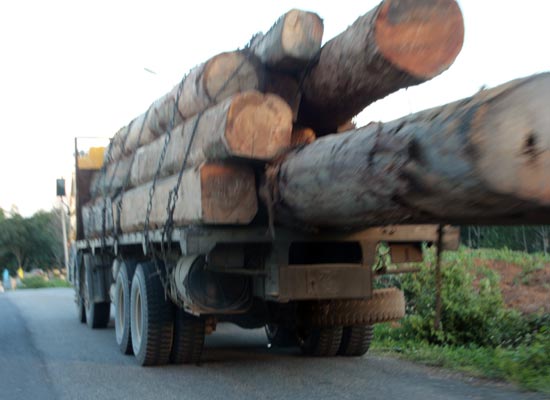|
Central
Highlands: rich forests turned into poor forests
The massive
conversion of forests into the land areas for rubber, industrial crop
cultivation and hydropower plant development led to the loss of 500,000
hectares of natural forests in the last 10 years.

Some
years ago, the government decided that less dense forestland would be used to
grow rubber and develop hydropower plants. However, rich forestland was
devastated to clear land for rubber fields and make room for hydropower
plants.
According to a plan approved by the government, about 100,000 hectares of rubber would be planted in 2009-2020 in the Central Highlands. However, by the end of 2015, the total rubber growing area had reached 164,000 hectares. dense green forests were suddenly listed as ‘poor forests’ and turned into rubber growing areas. In 2010, Hoang Gia Phat Trade, Service & Import/Export Company in Dak Lak province was allocated 977 hectares of forestland in Ea Jloi commune of Ea Sup district to grow rubber, including 193.5 hectares of poor forest to be upgraded for cultivation.
Locals
said the allocated forest was listed as ‘poor forest’, but in fact, the tree
density there is thick. There are trees with a trunk diameter of 15-60 cm and
precious wood. The forest in the project area belongs to the dipterocarp
forest ecosystem.
Also in 2010, the Kim Huynh Production, Trade, Service and Import/Export Company was allocated 778 hectares of forestland for protection and growing rubber. Nguyen Van Tru, an officer of Chu Pa Forestry Company, commented that he could not understand why the provincial authorities agreed to allocate forestland which was believed to have high reserve of wood to Kim Huynh. Under a plan set up by the Gia Lai provincial authorities, 66,000 hectares of forestland would be converted to rubber-growing land, including 51,000 hectares of natural poor forests. Forty-four rubber growing projects developed by 17 enterprises have been licensed so far in five districts of the province. It was initially expected that the rubber growing plan would be completed by 2015. However, in fact, only 25,000 hectares of rubber have been grown so far, half of the planned figure. Experts pointed out that Dak Lak and Gia Lai provinces still allowed enterprises to grow rubber on the dipterocarp forest land which is not suitable for rubber. After three years, Hoang Nguyen Company can grow 80 hectares of 1-year-old rubber plants, but they are very poor due to unfavorable land conditions. In the last 10 years, 80,000 hectares of forest were allocated to build 50 hydropower works. The policy has been exploited by many enterprises which registered to develop hydropower plants, but in fact, wanted to use forestry products and minerals.
SGDT
|
Thứ Ba, 26 tháng 7, 2016
Đăng ký:
Đăng Nhận xét (Atom)
Không có nhận xét nào:
Đăng nhận xét